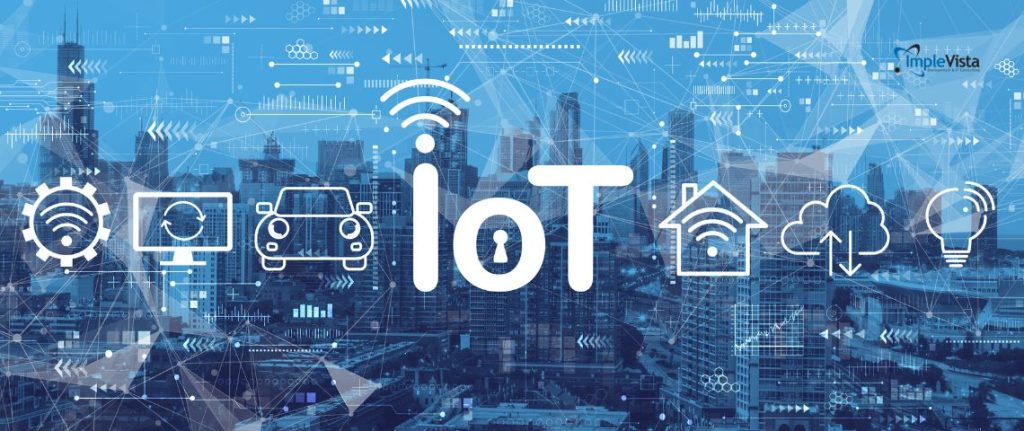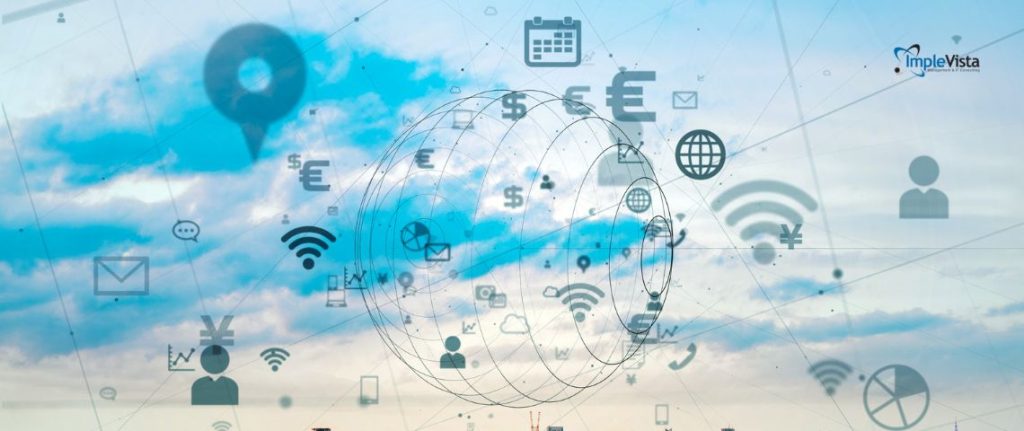5G for IoT: Advanced Connectivity Powers the Future of IoT
The fifth-generation wireless network (5G) is revolutionizing the Internet of Things (IoT) with ultra-fast speeds, massive device capacity, and ultra-low latency. Unlike 4G, 5G for IoT supports 10x more devices per square kilometer and delivers data up to 10x faster—allowing billions of sensors, cameras, and smart devices to operate seamlessly. By 2025, up to 75 billion IoT devices are expected to be connected globally.
This leap in connectivity is transforming applications like smart cities, industrial automation, and healthcare, making them more reliable and responsive. Countries like Bangladesh are embracing the shift: early 5G services have launched, and a national IoT strategy aims to build a $1 billion IoT industry.
Globally, modern cities and industries are being reimagined around IoT. In Hangzhou, China, the “Town of Internet of Things” showcases how deeply IoT is shaping urban development. Unlike previous networks, 5G for IoT was purpose-built to support connected environments. Features like network slicing let operators dedicate parts of the network to critical applications—ensuring stable, high-performance connections for everything from factory robots to remote healthcare.
Across the world, 5G infrastructure is expanding rapidly. In places like Poland, 5G-enabled equipment already advertises “5G in your city,” marking the arrival of a new era in connectivity.
Why 5G for IoT Matters
Speed and bandwidth: 5G offers multi-gigabit-per-second throughput, roughly ten times the peak speed of 4G. This means large datasets (high-definition video streams, real-time analytics, etc.) can flow between devices and the cloud nearly instantaneously.
Device density: 5G can support up to ten times more devices in the same area compared to 4G, which is crucial as IoT deployments scale into the billions of sensors and machines.
Low latency: 5G targets end-to-end delays of just 1 millisecond or less, enabling real-time control of devices. For example, this makes applications like remote surgery or autonomous vehicles possible, because commands sent over 5G arrive almost instantly. 5G also improves network reliability and coverage, with new frequencies (millimeter-wave) and techniques like beamforming that keep signals strong. In summary, 5G provides the foundation that IoT requires – it transforms wireless connectivity from a scarce resource into a plentiful, high-performance utility.
Key 5G Features for IoT:
- Network Slicing: Portions of the 5G network can be reserved for specific IoT services (e.g., utilities or healthcare), providing dedicated capacity and security.
- Massive MIMO & Beamforming: More antennas and smarter signal targeting mean better coverage for IoT devices, even in dense urban areas.
- Mobile Edge Computing: 5G often pairs with edge computing (see below) to process data close to devices.
These advances unlock previously impractical use cases. For instance, manufacturers can deploy thousands of sensors and actuators on a factory floor with assured performance. Smart grids can balance loads using real-time data. Even everyday experiences improve: imagine a smart parking system where your car and city sensors talk over 5G to guide you to an empty spot without delay.

The Future of IoT and 5G
The future of IoT is intimately tied to 5G and other advanced networks. Analysts forecast that IoT will dominate global connectivity in the coming years. For example, a leading market analyst predicts tens of billions of devices online by the mid-2020s. Telecom research suggests over 2.4 billion 5G subscriptions already existed by early 2025, with the number still climbing. In that context, 5G for IoT will be a major driver of data demand, enabling faster, more reliable, and ultra-low latency connections between billions of smart devices.
In practice, this means the IoT landscape will shift in several ways:
- Explosion of Use Cases: More industries will adopt IoT at scale. Transportation (autonomous cars, drones), healthcare (wearables, telemedicine), energy (smart grids), and manufacturing (robotics, predictive maintenance) are prime examples. All of these require robust connectivity, which is specifically designed to support.
- Edge Intelligence: Many IoT systems will use edge computing (see next section) to handle data locally. This allows AI and analytics to run on-site in near-real time. It enables this by providing high-speed connectivity between edge nodes and data centers.
- Enterprise IoT: Businesses will deploy private 5G networks for their own IoT needs. These are localized 5G networks (for example, within a warehouse or campus) that deliver full 5G speed and reliability under the company’s control—further showcasing the value in industrial environments.
In Bangladesh, these trends are especially promising. The government’s National IoT Strategy (2020) set bold targets – for example, creating a $1 billion IoT industry by 2023 and nurturing 100 local IoT startups by 2025. Major operators have already initiated 5G rollouts (Robi and Grameenphone switched on initial 5G zones in 2025). These moves signal that Bangladesh is preparing its future infrastructure with 5G for IoT at the core.
As one tech article notes, “Bangladesh is making significant strides in the global IT industry,” and local firms like Implevista are serving as trusted IT partners to help build that future. In short, the future of IoT in Bangladesh looks bright, with 5G for IoT solutions poised to drive smart agriculture, e-health, smart manufacturing, and more.

Edge Computing and 5G: Enabling Real-Time IoT
An essential piece of the 5G–IoT puzzle is edge computing. Edge computing means placing data processing and analytics resources close to where the data is generated (near the “edge” of the network), rather than relying on distant cloud servers. When combined with 5G’s high throughput and low latency, edge computing can unlock powerful IoT capabilities. For instance, processing video streams from security cameras in real time, or running analytics on factory sensors without delay.
As one industry expert explains, “Edge computing delivered via 5G networks enables companies to offer more users high-quality, next-generation application products and services”. In practical terms, this translates into:
- Ultra-Low Latency: By handling data at the edge and sending control signals over 5G, an IoT system can react within milliseconds. This is vital for applications like augmented reality or remote surgery.
- Real-Time Analytics: Edge nodes can crunch sensor data on the spot and share insights instantly. Combined with 5G, this means decisions can be made in real time (for example, adjusting a machine before it fails).
- Network Efficiency: Only summary data needs to travel to the cloud over the wide-area network, reducing bandwidth needs. The 5G backhaul then carries processed results or aggregates securely.
Industries are already exploring 5G+edge IoT. For example, manufacturing plants are using 5G-connected edge computers to automate quality control and monitor equipment. Smart cities use edge servers to fuse data from traffic sensors and cameras for instant alerts. Healthcare providers experiment with 5G-wearables and edge AI to monitor patients remotely. In fact, an Akamai report notes that IoT devices alone capture vast amounts of data – and that 5G networks paired with edge computing allow much richer, real-time data communication across more stable connections.
To summarize, edge computing makes 5G even more valuable for IoT. It takes advantage of 5G’s speed by processing data where it matters. This synergy means businesses can deploy IoT solutions that are fast, smart, and scalable. Implevista, for example, combines its IoT service with cloud and edge platforms to deliver such next-gen applications.
Other IoT Connectivity Options
While 5G is central, it’s not the only way IoT devices connect. Low-power wide-area networks (LPWAN) also play a key role, especially for devices that send small amounts of data infrequently. Technologies like NB-IoT and LoRaWAN offer long-range coverage (10+ km) and very low energy use, at a lower cost than 5G modules. They are ideal for applications like environmental sensors, agriculture monitors, or smart meters. 5G and LPWAN complement each other: 5G handles high-bandwidth, low-latency tasks, while LPWAN covers simple, wide-area monitoring.
Other connectivity methods include Wi-Fi 6 (useful for local IoT hubs in homes or offices), Bluetooth LE (for short-range device-to-device IoT links), and even satellite IoT for remote regions. As an example of integration, some smart devices use Bluetooth or Wi-Fi locally and then send data to the cloud via a 5G gateway. Ultimately, the best IoT solution often uses a mix of networks. For enterprise deployment, Implevista architects connectivity by combining 5G with these technologies – ensuring each IoT node has the right type of link.

IoT Use Cases Enabled by 5G
With 5G for IoT connectivity, many exciting applications become feasible, unlocking new possibilities across industries. Organizations worldwide are adopting 5G for IoT to drive innovation and operational efficiency. Some key use cases include:
- Smart Cities: City-wide sensor networks for traffic lights, air quality monitors, parking sensors, and public safety cameras thrive on real-time data. 5G for IoT enables cities to process information from thousands of connected devices instantly, optimizing traffic flow, pollution control, and emergency response.
• Industrial Automation: In modern factories, 5G for IoT connects robots, sensors, cameras, and control systems to support fully automated and intelligent manufacturing. High-definition video from assembly lines can be analyzed in real time to detect defects or coordinate robotic movements seamlessly.
• Healthcare & Telemedicine: Wearable health monitors and hospital IoT equipment stream vital data to healthcare providers. Thanks to 5G for IoT, latency is so low that remote diagnostics and even telesurgery—like operating a robotic medical device from another continent—become possible.
• Autonomous Vehicles & Logistics: Self-driving cars, drones, and delivery robots rely heavily on real-time sensor data. 5G for IoT allows these vehicles to communicate with each other and with centralized systems for safe and efficient navigation. A 5G-enabled network of cameras could, for instance, instantly warn a vehicle about road hazards ahead.
• Augmented/Virtual Reality (AR/VR): AR devices like smart glasses or VR headsets used in industrial and field operations demand high-speed, low-latency connectivity. 5G for IoT ensures the data throughput required to deliver seamless, real-time augmented experiences.
• Energy & Utilities: Smart grids rely on connected meters and sensors to manage power distribution. 5G for IoT enables these systems to coordinate across cities, improving energy efficiency, reducing outages, and supporting renewable energy integration.
Thales, a global tech leader, emphasizes that 5G for IoT will drive transformative applications across multiple sectors. Their vision includes remote village surgeries performed via 5G-connected robots and blackout-free communities powered by real-time smart grid control. These examples illustrate how it isn’t just an upgrade—it’s a leap toward a smarter, more connected future.
IoT Solutions in Bangladesh: Empowered by 5G
Bangladesh is gearing up to leverage these trends. Its telecom operators have begun limited 5G rollouts as of 2025, and the government has announced ambitious IoT targets. The immediate benefit will be faster mobile internet for consumers and businesses, but the long-term promise is in industrial and social IoT. According to industry analysts, once the 5G core networks and compatible devices are in place, Bangladesh can use 5G “slices” for dedicated industry networks, create private 5G for factories, and deliver ultra-reliable connections for utilities and healthcare.
In practical terms, sectors like agriculture, textiles, and transportation are prime for IoT growth in Bangladesh. Imagine rice fields with IoT sensors and drones monitored over 5G, or garment factories with real-time analytics on each machine. The national IoT strategy foresees smart farming, disaster management sensors, and digital health as focus areas. Local startups and established firms are starting to build solutions.
Notably, Implevista itself is contributing: as one tech blogger puts it, “[As a trusted IT partner in Bangladesh, Implevista] offers world-class IT solutions to help businesses thrive in this dynamic market”.

Implevista’s IoT Solutions Service
Implevista’s own IoT Solutions offering is designed to help companies deploy IoT end-to-end. This service covers sensor selection, device configuration, and integration with network infrastructure – including 5G, LPWAN, or Wi-Fi as needed. The solutions also include cloud or edge platforms to collect and analyze data in real time. In practice, Implevista works with clients to “ease and leverage [their] entire business process through IoT,” building custom platforms for each use case. For example, they might implement IoT monitoring in a factory by installing sensors and connecting them over 5G or LoRa to a central dashboard.
Implevista’s Cloud Engineering team then creates the data backend and analytics, while their Mobility team ensures devices stay connected even on the move. This integrated approach means a Bangladeshi manufacturer can start an IoT project without worrying about the network, hardware, or data processing – Implevista handles it all. To learn more, visit Implevista’s IoT Solutions page.
Challenges and Considerations
While 5G and IoT together offer huge potential, there are challenges to address. Security and privacy become more complex when you have millions of devices and distributed edge nodes. As one analysis notes, spreading data across many locations (at the network edge) raises the risk of breaches, since it’s harder to secure every device and storage point. Implevista and other providers must therefore implement robust encryption, device authentication, and monitoring to protect IoT systems.
Other challenges include the cost and device readiness. 5G chips and modules tend to be more expensive and power-hungry than simpler IoT radios (like NB-IoT). For battery-powered sensors in the field, a sub-GHz LPWAN connection may still be preferable. Bangladesh (like many markets) will likely use a mix of connectivity: 5G where high performance is needed (e.g., automated factories or hospitals), and other networks for lightweight sensors.
Integration complexity is another concern: companies must ensure their new IoT applications work smoothly with existing IT systems and processes. This requires careful planning and often consultation with experts. Finally, regulatory and infrastructure factors matter. Achieving full 5G coverage can be expensive, and ensuring spectrum availability or building out edge data centers takes time.
Despite these challenges, many of them are being solved with technology and policy. For instance, network slicing and private 5G help companies create secure, dedicated networks. Edge AI and efficient firmware improve device performance. Bangladesh itself is working on spectrum regulation to make 5G deployment easier. With the right approach, these obstacles can be managed. The key is to start small (pilot projects) and scale up as experience grows – something Implevista can guide clients through.
5G is a transformative technology for IoT. By delivering fast, reliable connections to a massive number of devices, it unlocks new IoT applications that were previously impossible. Businesses globally – and especially in fast-growing IT markets like Bangladesh – are already starting to benefit from 5G-enabled IoT. From smart industry to connected healthcare, the combination of 5G networks, IoT devices, and edge computing is paving the way to a more data-driven, automated future.
If you are interested in leveraging 5G for your IoT projects, Implevista can help. Their experts offer end-to-end IoT solutions, as described on their IoT Solutions page, as well as related services like Cloud Engineering and Mobility to support your connectivity needs.
- Contact Implevista: Reach out to discuss your IoT and 5G initiatives. (Visit Implevista’s Contact page.)
- Explore our IoT Services: Learn more on the Implevista IoT Solutions page.
- Subscribe to Our Blog: Stay updated on IoT and tech trends by subscribing to the Implevista Blog.
Embrace the power of 5G for IoT today and position your business at the forefront of connectivity innovation!




